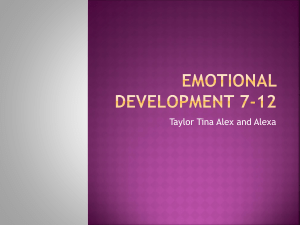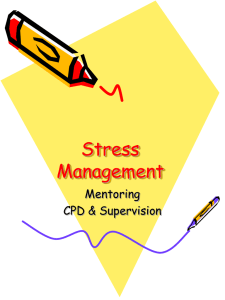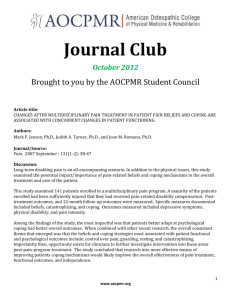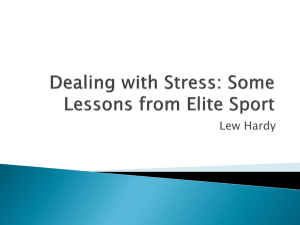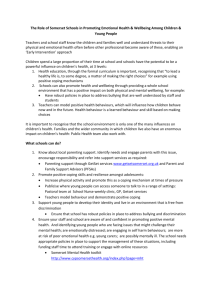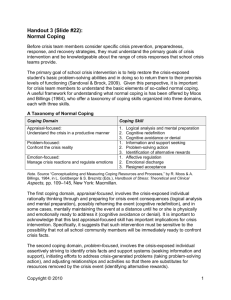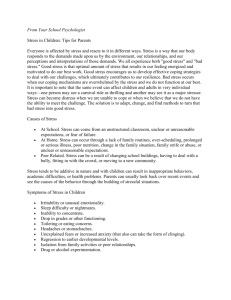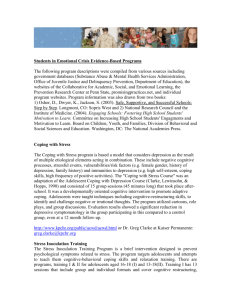Principles of Crisis Intervention
advertisement
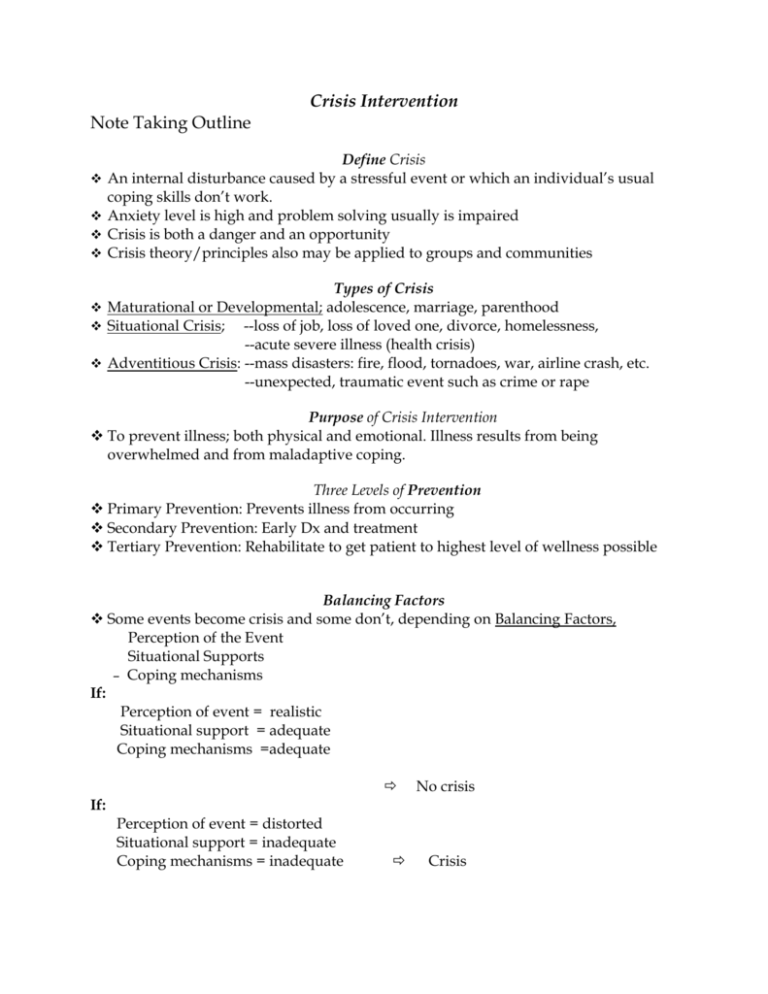
Crisis Intervention Note Taking Outline Define Crisis An internal disturbance caused by a stressful event or which an individual’s usual coping skills don’t work. Anxiety level is high and problem solving usually is impaired Crisis is both a danger and an opportunity Crisis theory/principles also may be applied to groups and communities Types of Crisis Maturational or Developmental; adolescence, marriage, parenthood Situational Crisis; --loss of job, loss of loved one, divorce, homelessness, --acute severe illness (health crisis) Adventitious Crisis: --mass disasters: fire, flood, tornadoes, war, airline crash, etc. --unexpected, traumatic event such as crime or rape Purpose of Crisis Intervention To prevent illness; both physical and emotional. Illness results from being overwhelmed and from maladaptive coping. Three Levels of Prevention Primary Prevention: Prevents illness from occurring Secondary Prevention: Early Dx and treatment Tertiary Prevention: Rehabilitate to get patient to highest level of wellness possible Balancing Factors Some events become crisis and some don’t, depending on Balancing Factors, Perception of the Event Situational Supports – Coping mechanisms If: Perception of event = realistic Situational support = adequate Coping mechanisms =adequate No crisis If: Perception of event = distorted Situational support = inadequate Coping mechanisms = inadequate Crisis Assessment of Balancing Factors Perception of Event Cognitive/intellectual skills Ability to maintain self image and sense of purpose Ability to redefine the event Situational Supports – How well does patient utilize other people for support? Coping Skills Does client have ability to express strong emotions? Preferred modes: does client prefer or have skill with actions, like exercise, writing, crying, talking? Ability to tolerate uncertainty Problem solving ability; making plans BALANCING FACTORS SCENARIO: In the following scenario, compare the balancing factors that influence each clients’ response to the crisis situation. There was a fire at an apartment building, which severely damaged it. Residents were brought to the Emergency Department for evaluation for possible smoke inhalation. Fortunately, there were no serious injuries. Two residents in their twenties spoke with the nurse in the ED . . . . . . . . . . . Client “A” Perception: “I lost my home, but I’m safe and that’s what matters.” Supports: “My church is already taking up a collection.” Coping: “The first thing I’m going to do when I leave here is blog about this incredible experience.” Client “Z” Perception: “I lost everything that means anything to me.” Supports: “My Dad always told me it was a bad neighborhood. He says no wonder there was a fire .“ Coping: “Now what do I do? I can’t think straight about this.” COPING ASSESSMENT: See Clinical Example (“Jalen”) on p. 90 (5th ed. p.126-127) of Keltner to complete this exercise: Identify Adaptive, Palliative, Maladaptive and Dysfunctional coping behaviors of the client in crisis portrayed in the example. What were his usual coping resources? Principles of Crisis Intervention Focus is on the “Here and Now” Past traumas may create a current crisis, BUT: Crisis counselors do NOT explore early life events Assumption is that client will be able to cope if given necessary basic information and support. Length of crisis treatment is no more than 6 weeks Client usually very receptive to help. May be open to change. Excellent time for teaching, referrals Primary and Secondary Prevention: Community Resources Walk-in centers, Emergency services 24 hr. Hotlines Disaster planning for vulnerable populations Disaster teams, go-to mobile services

